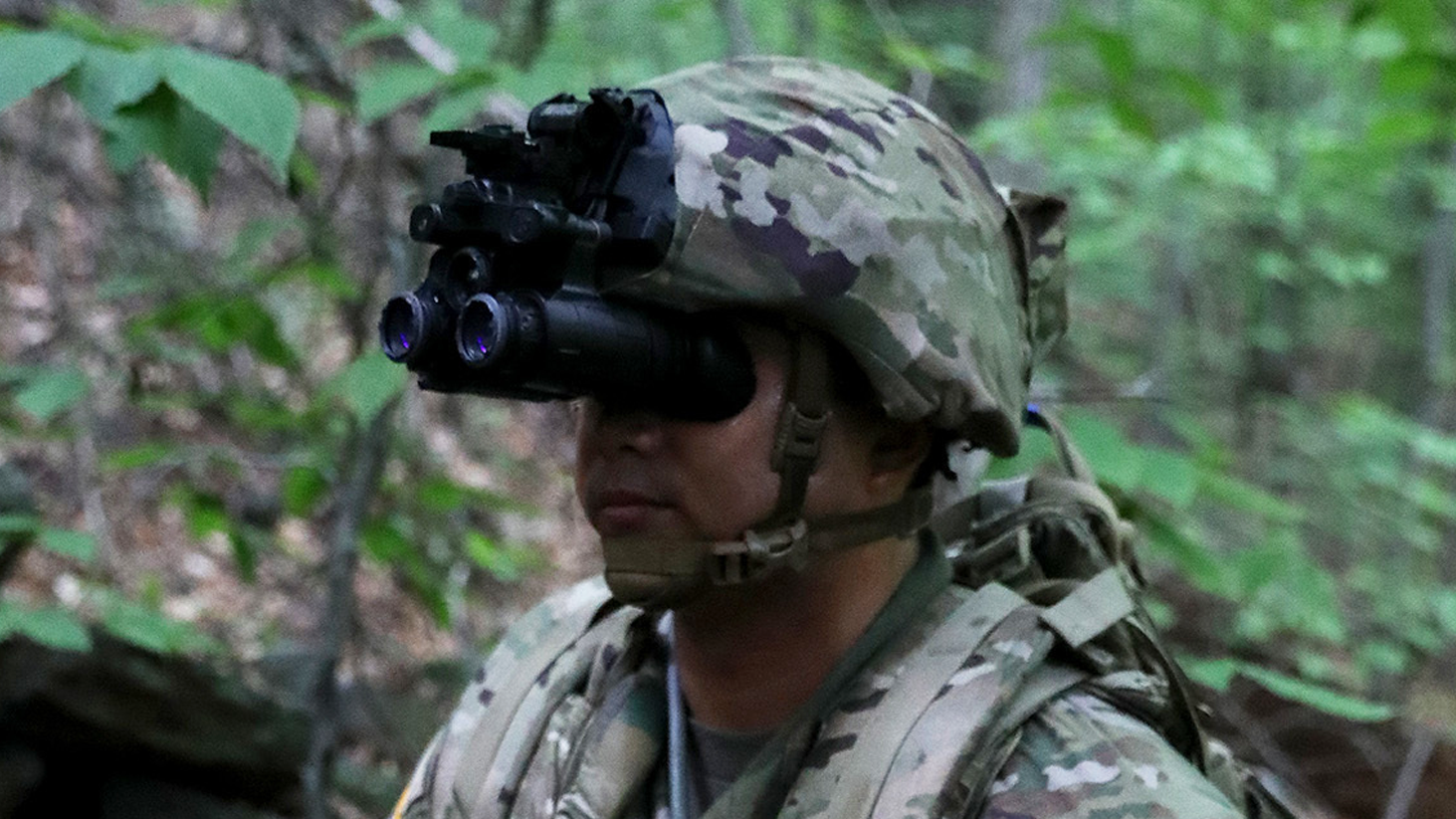
A soldier wears the new ENVG-B night vision goggles (Patrick Ferraris/US Army)
WASHINGTON: The Pentagon’s blue-sky research agency recently announced that it selected 10 organizations to develop enhanced, less bulky night vision goggles to keep the crimp out of servicemembers’ necks. And so they can see better at night.
“Current night vision (NV) systems are bulky and heavy, resulting in a significant torque on the wearer’s neck. This torque greatly limits the wearer’s agility and often leads to chronic injury over prolonged use,” said a Defense Advanced Research Projects Agency announcement Wednesday. “Additionally, existing NV devices only provide a narrow field of view (FOV) and are limited to the near-infrared (IR) spectral bands, greatly limiting situational awareness in varied night conditions.”
The program, dubbed Enhanced Night Vision in Eyeglass Form (ENVision), will be divided to solve those problems in two separate technical areas. The five organizations selected in the first technical area will try to reduce the size and volume of night vision goggles. DARPA chose Raytheon Technologies Research Center; SRI International, University of California-San Diego, University of Washington and Physical Sciences, Inc., for that job.
RELATED: Army says next-gen AR goggles delayed over field of view issues
The second technical category will use new technologies and processes to convert and amplify infrared to visible light. The agency selected Raytheon BBN, Stanford University, University of Central Florida, University of Melbourne and University of Pennsylvania.
“These efforts could potentially lead to all-optical night vision systems in the future without the need for image intensifiers,” said Rohith Chandrasekar, ENVision program manager in DARPA’s Defense Sciences Office.
Sullivan: Defense industry ‘still underestimating’ global need for munitions
National Security Advisor Jake Sullivan said that there are “no plans” for another Ukraine supplemental at this point.


























